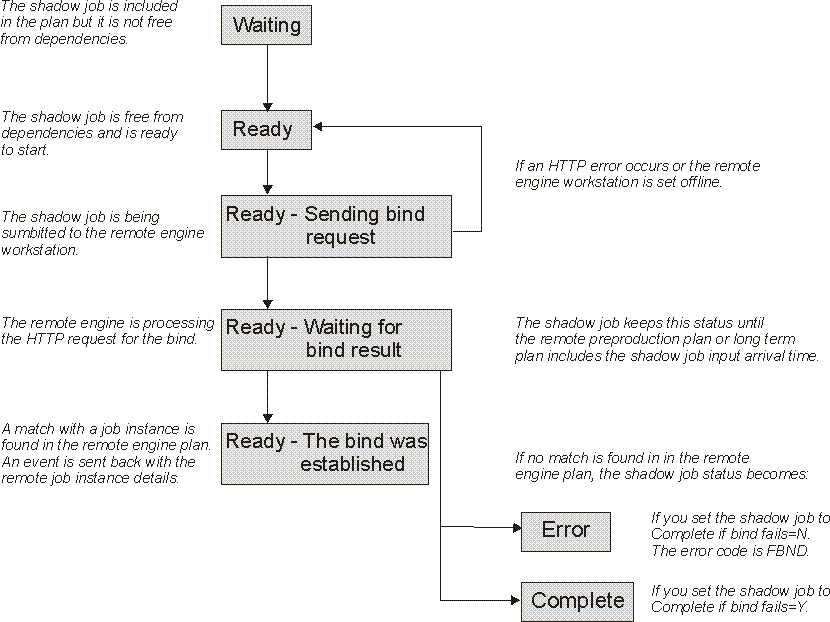How the shadow job status changes until the bind is established
STATUS - Extended status.
You can see the extended status of a job shown in the SELECTING APPLICATION
OCCURRENCE AND OPERATION INFORMATION panel. 
The initial status of the shadow job is WAITING (W). It changes to READY (R) as soon as the shadow job becomes free from dependencies and is ready to start.
The scheduler then sends an HTTP request to the remote engine asking to bind that shadow job instance with the instance of the remote job that closest precedes the shadow job input arrival in the remote engine plan. The HTTP request contains both the information to identify the shadow job in the current plan and the information to uniquely identify the remote job instance in the remote engine plan. The scheduler requires, as well, to be notified about the status of the remote job instance bound.
Depending on whether the shadow job is a z/OS or a distributed job, the way to associate it with a remote job instance is slightly different. The following sections describe how the job instance is matched in the remote engine plan.